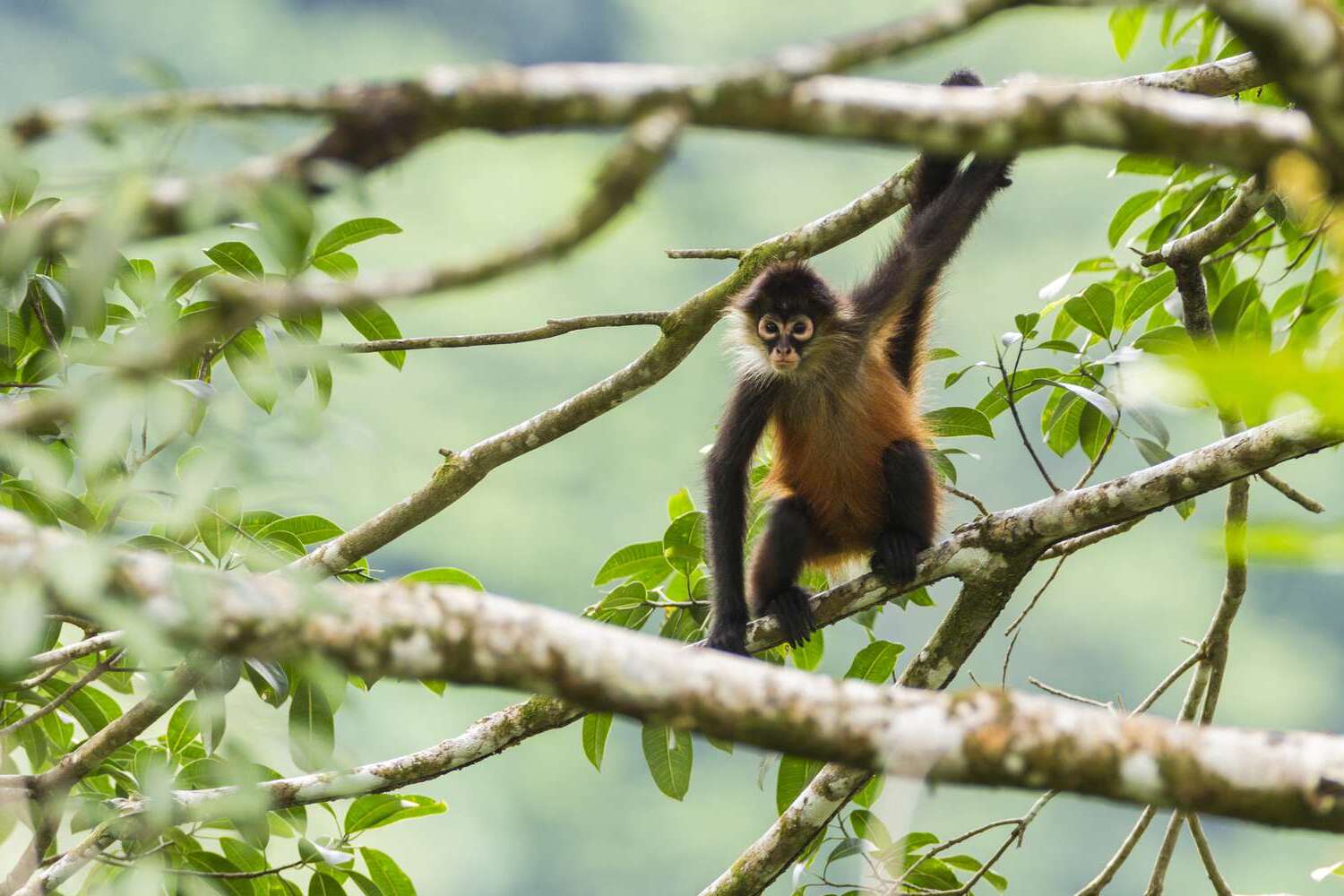
Ever wondered about the cheeky world of monkeys beyond their mischievous antics and adorable faces? Monkeys are one of nature's most fascinating creatures, with behaviors and traits that might just surprise you. From their complex social structures to their surprising intelligence, there's a lot to learn about these amazing animals. Did you know that some monkeys are known to use tools or that they have unique dialects depending on their location? Yep, you read that right! Monkeys are not just about swinging from trees and making faces. So, buckle up as we dive into 20 fun facts about monkeys that will surely leave you amazed. Ready to have your mind blown by some incredible monkey facts? Let's get started!
Key Takeaways:
- Monkeys have diverse diets, social structures, and communication methods, making them fascinating creatures. They play crucial roles in ecosystems and have contributed significantly to scientific research.
- Monkeys display playful behaviors, have unique adaptations, and are part of human culture. However, they face threats from habitat destruction and the illegal pet trade, making conservation efforts crucial for their survival.
Monkeys and Their Unique Diets
Monkeys have diverse diets that can include fruits, leaves, seeds, and even small animals. This variety helps them adapt to different environments, from lush rainforests to sparse grasslands.
-
Some species, like the Capuchin, are known for using tools to crack nuts, showing remarkable problem-solving skills.
-
Interestingly, the Pygmy Marmoset, the smallest monkey species, feeds primarily on tree sap.
Social Structures of Monkey Groups
Monkeys are highly social creatures, living in groups that have complex hierarchies and social bonds.
-
In many species, such as baboons, groups are matriarchal, with females leading the troop.
-
Grooming plays a crucial role in their social life, used not only for cleanliness but also to strengthen relationships and establish social hierarchies.
Communication Among Monkeys
Their communication is sophisticated, utilizing vocalizations, facial expressions, and body language to convey messages.
-
For instance, the Howler Monkey is famous for its loud calls that can be heard up to 3 miles away, serving as territorial signals or group cohesion efforts.
-
Capuchin monkeys show deception in their communication, sometimes making false alarm calls to distract others and steal food.
Monkeys in Human Culture
Monkeys have been part of human culture and mythology for centuries, symbolizing intelligence, curiosity, and even mischief.
-
In Hinduism, Hanuman, the monkey god, is a prominent figure representing strength and devotion.
-
Ancient Egyptians revered the Baboon as a symbol of wisdom and were often depicted in their art and hieroglyphs.
Conservation Status of Monkeys
Despite their adaptability, many monkey species face threats from habitat destruction, hunting, and the illegal pet trade.
-
The Golden Lion Tamarin, native to Brazil's Atlantic Forest, is among the most endangered, with habitat loss being a significant factor.
-
Conservation efforts, including breeding programs and habitat restoration, are crucial for the survival of these fascinating creatures.
Monkeys and Their Learning Abilities
Monkeys are incredibly intelligent, capable of learning through observation and experimentation.
-
Research has shown that some species can learn to use money, trading tokens for food, demonstrating a basic understanding of commerce.
-
They can also recognize themselves in mirrors, a sign of self-awareness that few animals possess.
Unique Adaptations of Monkeys
Their physical and behavioral adaptations are key to their survival in diverse environments.
-
The Spider Monkey has a prehensile tail, acting as a fifth limb for gripping branches, which is essential for their arboreal lifestyle.
-
Some species, like the Snow Monkey of Japan, have adapted to cold climates by soaking in hot springs to keep warm during winter.
Monkeys and Their Role in Science
Monkeys have contributed significantly to scientific research, particularly in studies related to genetics, behavior, and medicine.
-
The Rhesus Macaque was instrumental in the development of the polio vaccine, highlighting their role in medical breakthroughs.
-
Their genetic similarity to humans makes them valuable models for studying diseases, though this raises ethical concerns about their use in research.
The Playful Side of Monkeys
Despite the challenges they face, monkeys often display playful and curious behaviors that endear them to people.
-
They are known to engage in games and play-fighting, which helps young monkeys learn social cues and physical skills.
-
In some tourist areas, monkeys have learned to interact with humans, sometimes even stealing items to barter for food.
Monkeys' Impact on Ecosystems
As part of their ecosystems, monkeys play vital roles in seed dispersal and maintaining the balance of their habitats.
A Peek Behind the Curtain: Monkeys Uncovered
We've journeyed through a jungle of facts, swinging from the surprising to the downright fascinating. Monkeys, with their cheeky grins and complex societies, never cease to amaze. From their role in ecosystems as seed dispersers to their use of tools and complex communication, these creatures showcase the incredible diversity and adaptability of wildlife. Remember, monkeys aren't just entertaining; they're key players in their habitats and have much to teach us about the natural world and, indirectly, about ourselves. So next time you catch a glimpse of these playful primates, whether on a screen or in the wild, appreciate the depth of their world. It's a reminder of the wonders that lie in nature's nooks and crannies, waiting for curious minds to uncover.
Frequently Asked Questions
Was this page helpful?
Our commitment to delivering trustworthy and engaging content is at the heart of what we do. Each fact on our site is contributed by real users like you, bringing a wealth of diverse insights and information. To ensure the highest standards of accuracy and reliability, our dedicated editors meticulously review each submission. This process guarantees that the facts we share are not only fascinating but also credible. Trust in our commitment to quality and authenticity as you explore and learn with us.


